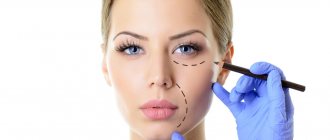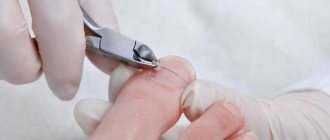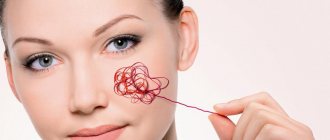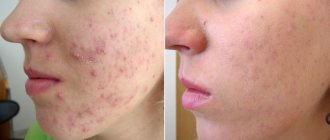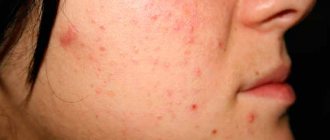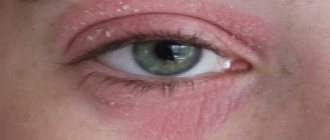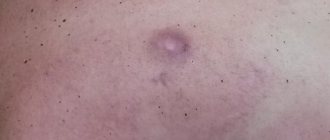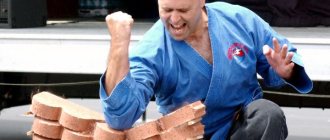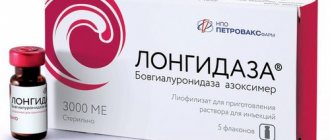Ingrown nail. Problem
toenails
grow unhindered and painlessly throughout their lives. Troubles arise when the plate, for a number of reasons, rests on the periungual fold and injures it. In most cases, this occurs on the big toe. It has a large nail and large soft tissue ridges.
Operation
Surgical intervention
is performed on an outpatient basis under general anesthesia according to Oberst-Lukashevich (Novocaine, lidocaine and others).
The drug is administered in 2.0 - 4.0 ml. with a very small needle in the projection of the neurovascular bundles at the base of the finger. We most often use an insulin syringe.
To bleed the finger, provide good visualization and prevent bleeding, we use a rubber flagellum. The duration of the operation is usually 5 - 30 minutes.
Radio wave removal method in the clinic
Radio wave removal
We remove ingrown nails and pathological granulations. We treat the growth zone with radio wave electrodes (Surgitron or Fotek E81M). They give more reliable results
.
Cost - 3500 rubles
Operation according to Schmieden
Resection
of the ingrown edge of the nail with excision of the ridge and part of the bed with treatment of the growth zone with a radio wave. We apply stitches (atraumatic suture material). In advanced situations or in case of relapse.
Cost - 4500 rubles
Options for surgeries at the clinic
Regular or simple removal
We resect the ingrown edge of the nail plate. Using a Volkmann spoon, we scrape out the pathological granulations and treat the growth zone.
Cost - 2500 rubles
Radio wave removal
We remove ingrown nails and pathological granulations. We treat the growth zone with radio wave electrodes (Surgitron or Fotek E81M). They give more reliable results
.
Cost - 3500 rubles
Operation according to Schmieden
Resection of
the ingrown edge of the nail with excision of the ridge and part of the bed. We apply stitches (atraumatic suture material). In advanced situations or in case of relapse.
Cost - 4500 rubles
Cost of treatment. Operation price
| Service | Cost, rub) |
| Initial appointment. Consultation | 1500 |
| Removing an ingrown toenail is simple | 2500 |
| Removal of ingrown toenails using the radio wave method | 3500 |
| Removal of an ingrown nail using the radio wave method with plastic surgery of the periungual fold according to Schmieden + radio wave | 4500 |
Liniment Vishnevsky
Unlike many other drugs, Vishnevsky's liniment does not have a toxic effect on the human body. It is cheap and available, and its effectiveness is time-tested.
How does Vishnevsky ointment work on an ingrown nail?:
- Castor oil softens and moisturizes the periungual fold.
- xeroform dries weeping tissue, helping to eliminate redness and swelling in the area of inflammation.
- tar normalizes blood circulation and microcirculation in damaged tissues, ensures an uninterrupted supply of nutrients and biologically active substances.
The use of liniment leads to the death of all pathogens that have managed to penetrate the damaged skin. Apply a gauze pad soaked in the product to the affected areas once a day until complete recovery. Vishnevsky ointment is not prescribed by doctors to patients who have identified individual sensitivity to the ingredients. The product has a very specific smell.
After radio wave removal of an ingrown toenail
After the intervention, apply an aseptic bandage. It is very important for the patient to prepare in advance soft, loose shoes that he will wear immediately after the operation. It would be better if it were two sizes larger. With a bandage on your finger, it is difficult to fit into what you usually wear on your leg. At our clinic we have a special long shoehorn that will make it comfortable to put on your shoes. After returning home, you should try not to walk unnecessarily for the first 24 hours. The postoperative wound bleeds and the bandage may become saturated with blood. If this happens, you need to additionally bandage your finger yourself.
Baneocin
There are many pathogenic microorganisms in the surrounding area, and most often a person is attacked by Staphylococcus aureus and Staphylococcus epidermidis. One microcrack in the skin is enough for an infectious process to develop within a few days. And an ingrown nail causes damage leading to the formation of microcracks. We need powerful bactericidal agents and one of them is Baneocin.
The following components fight bacteria:
- neomycin sulfate;
- bacitracin zinc.
The effectiveness of Baneocin ointment for ingrown toenails is also based on the properties of the excipients: lanolin and paraffin. After applying the product, they form a protective film on the skin, preventing infection.
Rub the ointment 1-2 times a day, but not longer than a week. Unlike other drugs, Baneocin has more contraindications - severe pathologies of the urinary organs, liver, vision and hearing. The ointment should not be used by people with individual sensitivity to aminoglycosides.
Complications
If an ingrown toenail is left untreated, it can lead to serious consequences. Local infection often leads to deeper suppuration of the subcutaneous tissue and bone (osteomyelitis). Complications are especially likely if you have diabetes or peripheral artery disease. If the operation is performed incorrectly (insufficient or excessive treatment of the growth zone), then relapse or re-ingrowth, deformation of the nail plate are possible (see photo below). Relapses occur when the patient does not comply with preventive measures and doctor’s recommendations.
Treatment of nail fungus with PinPointe FootLaser laser
02. How long does it take to completely cure nail fungus? Is there a way to speed it up somehow?
Nail fungus, or onychomycosis, is an infectious disease of the nail plates of fungal etiology, caused by dermatomycetes, yeast or mold fungi, which affects any component of the nail complex, including the growth zone, bed or the plate itself. In all countries of the world, this is one of the most common diseases of the skin and its appendages. The disease can be accompanied by discomfort, changes in the appearance of the nails, which in some cases leads to serious physical and professional limitations, aesthetic anxiety for patients, and also reduces their quality of life. Diseases such as flat feet, varicose veins of the lower extremities, and hyperhidrosis (excessive sweating of the feet) increase the likelihood of developing onychomycosis. Excessive dryness of the skin, which develops as a result of endocrine disorders (hypothyroidism, diabetes mellitus) or as a natural condition in old age, also creates a favorable environment for the development of the disease.
Diagnosis of onychomycosis:
— clinical picture, anamnestic data (changes in nail plates)
– microscopic examination (examination of a wet preparation in potassium hydroxide)
— cultural examination (culture with identification of the pathogen).
Treatment of onychomycosis is possible at any time the disease manifests itself, but the most rapid and effective treatment is with minimal damage and modification of the nail plate. The main method of treating onychomycosis is the complex prescription of drugs, both systemic (in the form of tablets by mouth) and external agents (solutions, drops). Patient management tactics depend on the area of the lesion and the duration of modification of the nail plates. Treatment rates can be improved by the additional use of laser treatment of nail plates, which contributes not only to the antifungal effect, but also to improved trophism of the nails with their speedy recovery. Topical (local) application of antifungal varnishes containing ciclopirox 8% or amorolfine 5% can also help to quickly get rid of a fungal infection, as an additional remedy to oral medications, especially for resistant infections.
Reviews:
Barkalov Sergey
I suffered with the problem of an ingrown toenail for almost a month. When the pain became completely unbearable, I began to look for where I could be cured. As a result, I turned to Alexander Shadzhievich. He carried out all the procedures and follow-up superbly. I'll be honest, I was very nervous and worried about the operation. But the whole process, surprisingly, was almost painless, just like the first days of dressings. Even taking into account my business trips, everything healed quite quickly, the main thing is to follow all the doctor’s recommendations. I am very grateful to Alexander Shadzhievich for the accuracy and attention shown during the treatment.
Esenbekov Bek
I contacted doctor Alexander Shadzhievich regarding the removal of an ingrown nail on two fingers after a relapse. I am pleased with the result and express my deep gratitude to Alexander for his professionalism and friendliness. I recommend it if you want to get rid of the problem forever.
Azanov Igor Gennadievich
Since the age of 14 (since 1973), I have had the problem of an ingrown toenail on the big toe of my right foot. Initially, I did not contact doctors. I cut it out myself, which was sometimes extremely painful and was accompanied by suppuration (I applied Vishnevsky ointment). Then the nail grew back and the problem returned. For the first time, the rightmost part of a large nail was removed in a hospital in the 80s. There was no positive result, as with all subsequent surgical removals (several times). In 2006, a private clinic performed laser removal, which also turned out to be unsuccessful. In 2020, I went to a podiatry clinic for advice on preventing ingrown toenails (they don’t do removal there). If it is necessary to remove an ingrown nail, it is recommended to contact Dr. Garmaev A.Sh. 10/12/2019 doctor Garmaev A.Sh. performed a marginal resection of the nail using radio waves, gave qualified recommendations on wound treatment and further nail care. As a result of the operation, for the first time I got rid of subsequent ingrown nails and all the accompanying problems. I express my deep gratitude to doctor Alexander Shadzhievich Garmaev for his high professionalism, attentive and sensitive attitude to the patient’s problem. Sincerely, Azanov I.G. 04/29/2020
How to remove a toenail
When the doctor says “resection of the nail plate is necessary,” most people get goosebumps, because they immediately imagine a clinic office, surgical instruments, a wound, blood, pain. You shouldn’t delve into such thoughts, because in reality, enduring pain every day with every step is much more painful than having your big toenail removed for medical reasons.
You also need to know that today other methods of treating onychocryptosis are used - for example, laser removal of a toenail or getting rid of the disease using radio waves. A person who suffers from this disease simply needs to compare the different ways in which the thumb can be cured. The patient can make a balanced choice of treatment method by comparing which treatment method is most suitable for him:
- by type of impact;
- healing rate after intervention;
- price for performing the manipulation;
- the amount of necessary medications.
Laser
This is a gentler method of treating onychocryptosis than conventional surgery. Laser removal of an ingrown toenail involves evaporating the overgrown edge by applying high temperature. This procedure is performed on an outpatient basis under local anesthesia and takes up to 20 minutes. After completion, the patient has virtually no painful sensations, because the laser does not affect healthy tissue. This almost halves the patient’s recovery period after the intervention compared to surgery, and also prevents the risk of improper growth of the nail plate in the future.
Operation
This method has been used for a very long time; photographs of this procedure and its results are very common. How to surgically remove an ingrown toenail:
- Under local anesthesia, the surgeon makes an incision in the skin of the big toe over the affected area.
- The ingrown segment is eliminated with a scalpel and part of the matrix of the horny plate is excised to prevent the possibility of ingrowth in the future.
- The wound is treated with antibiotics.
- The patient needs to bandage the next two weeks, apply prescribed ointments to the finger and follow a gentle regime for the leg. Recovery is expected in a month.
Patch
The plaster has become the least traumatic and at the same time affordable. The remedy is often used in home treatment to get rid of fungus-affected toenails of the big toe. Keratolytic patch is a representative of a special group of products; it can be purchased inexpensively in an online store from a catalog. How to remove a toenail using it:
- First, be sure to cover the healthy skin of the big toe with a regular plaster - this will protect it from the effects of keratolite.
- Next, the plaster mass is applied in a thick layer and sealed, leaving it to act for 2-3 days.
- After removing the patch, parts of the affected nail plate are removed with scissors or forceps and the bed is treated with antifungal agents.
- Applications are repeated until complete healing.
